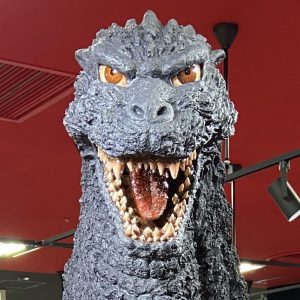On Christmas Eve 2023 we hosted a dinner and Secret Santa gift exchange game for twenty-five or so of our relatives and friends. Among that number is someone I have known since 1986, or thereabout. We met and became friends while working at the (sadly now defunct) Empire Cinema in San Francisco.
At one point during the chaos and cacophony of small talk, cross talk, and mealtime talk, my friend and I were able to sit and chat about our favorite subject: movies. During our talk my friend made an offhand comment that “in a few years all movies will be made by A.I.”
I did not know if he was serious, but I shared my opinion that could not and would not happen. Ever. We moved onto another movie related subject, or were interrupted by someone, or perhaps ate dinner. No idea. It was a busy evening…
But his comment kept rattling and rolling around in my head, eventually knocking against an unsettling observation made by Miles Bennell, protagonist and narrator of Jack Finney’s 1955 novel Invasion of the Body Snatchers, which I read way back in 1981 or 82.
Bennell notices that the people who have been assimilated by the pods lack creative energy. Because they are not human, only copies of humans. While they have the memories of the people they have copied, they do not have the passion for their interests, hobbies, or work.
The somber and chilling 1978 film version of Invasion of the Body Snatchers, my personal favorite variation of the Body Snatchers story, dramatizes this observation with blood-curdling clarity. At the start of the film we see just enough of the human version of Geoffrey (Art Hindle) to understand the man’s love of basketball is causing him to emotionally and intellectually neglect his romantic partner, Elizabeth (Brooke Adams).
After Geoffrey is assimilated, he no longer has any passion or interest in basketball. He gives away tickets for a game he did not want to miss and, in an unsettling moment that calls back something from the start of the film, we see Geoffrey sitting in front of the television, headphones on, staring at a test pattern.
The film’s gooseflesh inducing ending follows a blank-faced Matthew (Donald Sutherland) going through the motions of working, while also observing the assimilated people that surround him. One image in particular, wherein Matthew looks in on the assimilated woman he, once upon a time, was falling in love with, and sees everybody just standing or sitting, staring off into space.
They are all at their workplace, but they are not really working. They are just… existing within the space the humans they have duplicated occupied prior to assimilation.

It is that image in particular that brings me back around to why I think A. I. “creations” will never, ever replace human art. Because they are a flat imitation, a copy, of something that cannot be imitated or copied: the human mind.
Because whatever it is that makes an individual who and what they are is, at this time, intangible.
As much fun as it is to think that A. I. can make the infinite monkey theorem empirically verifiable, I doubt that supposed verification would ever create something original or unique. That would take a human mind. A human soul. A human drive.
The only thing that A. I. can do is mix and match pre-existing elements and concepts into more pre-existing elements and concepts. It cannot, and will never, think outside the box. Take a chance or a risk.
Because of this A. I. art exists in an area of the uncanny valley that is equal parts hilarious and unnerving. It is has all the elements of a human creation, but none of the actual humanity.
I would expect nothing else from the “great tech minds” behind the snake oil that are NFTs and cryptocurrency.

